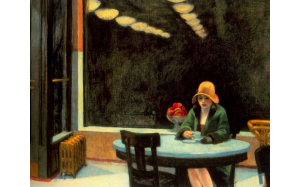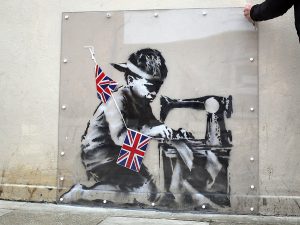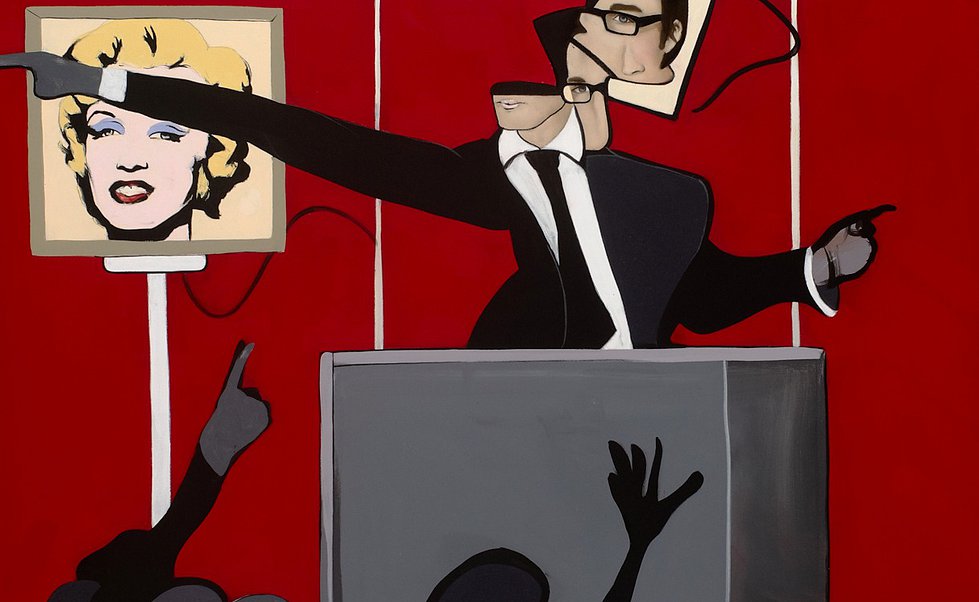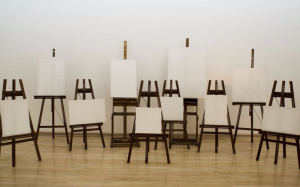Edward Hopper Loneliness in a big city
 For most Europeans, the art of Edward Hopper (Edward Hopper) confirms their peculiar image of America, which, in turn, manifests itself in scenes depicting the artist, characterized by a double-code: the motifs he uses seem at first sight to be typical American, but together so that its appeal to realistic details is original. And this explains the special significance of Hopper’s creativity in the times of American modernism. Often Jackson Pollock’s expressionistic abstractions and Edward Hopper’s new realism are considered to be two important areas of American individualism and artistic integration.
For most Europeans, the art of Edward Hopper (Edward Hopper) confirms their peculiar image of America, which, in turn, manifests itself in scenes depicting the artist, characterized by a double-code: the motifs he uses seem at first sight to be typical American, but together so that its appeal to realistic details is original. And this explains the special significance of Hopper’s creativity in the times of American modernism. Often Jackson Pollock’s expressionistic abstractions and Edward Hopper’s new realism are considered to be two important areas of American individualism and artistic integration.
Edward Hopper’s work, on the one hand, is a constant contrast between Nature and Civilization, on the other hand (if we talk about the technique) – even his early paintings point to the important role of light in the artist’s work, which, until the end of Hopper’s life, was present in his works The detachment with which the artist created his paintings was intended to show the beauty that is present at every minute of our everyday life.
Hopper’s realism can be described as revealing to us a broad field for the interpretation of elements that, in fact, are not in the picture. Also, the artist adds to the realm a crunch of fantasy. Hopper’s relation to nature is associated with the archetype of the boundary, the meeting place of Nature and Man, which played an important role in shaping American national identity. But at the same time, Hopper’s main idea of creativity was human loneliness, which the artist so skillfully embodied, animated in his writings.
Despite the fact that Hopper drew predominantly, landscapes and cities, he did not do without his paintings, which featured nude women. In the female body, the artist saw the personification of subconscious desires. At the same time, in the figure of a woman (who sometimes is in a husband’s community), Hopper embodied solitude. Very soon he began to draw only one woman – Josephine – his own wife (also an artist he called Joe (Jo)). She appears in Hopper’s paintings from various angles and situations, in different roles and at different ages. One can assume that in this way the artist portrayed someone else that can be linked to the loneliness of each person, even if there is someone next to him.
We can only guess what women think in Hopper’s paintings. What did the artist think, depicting lonely women? Even if he had some personal or creative crisis in his life, he completely controlled them. Only some of Hopper’s works give the impression of an obsessional interest of the artist by his wife. The connection, which apparently seemed to be perfect and harmonious, also concealed anxious moments in itself. Given that Joe was almost the only model of Hopper, the question arises whether, depicting different Joe clones, the artist subconsciously misses another woman? Could he feel lonely despite his wife’s constant presence?
Strange and ambiguous emotions cause Hopper’s paintings, they seem distant, but at the same time it’s very hard to tear them away. Perhaps this is just what we call our Artist’s style. In any case, in his works there is an elusive thing that does not release our view when we look at the paintings, does not allow us to pass, and Hopper’s realism is only a game between the images of reality and the contemplation of their viewer, decoding this reality, which in turn creates a new reality in the art of Edward Hopper.





